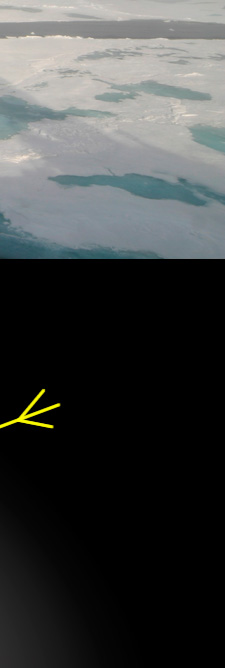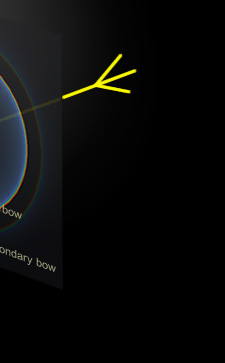 |
 |
 |
|
 |
|
|
||||
 |
||||
|
|
||||
 |
| Arctic Fogbow at latitude 82.5N seen from a Russian nuclear powered ice-breaker. Photographer Paul Money (Astrospace) was on a visit to the North Pole. ©Paul Money, shown with permission. |
| Soft sunlight filters through a fog layer near the cold ice and sea. The miniscule fog droplets scatter light to form a broad fogbow that accompanies the ship as it forces through the ice. Pastel reds fringe the bow'souter edge with the merest hints of blues at the inner. Fog droplets are small enough that when light interacts with them its wave nature is significant. Light is not simply refracted or reflected at the drop surface. Instead, its waves are scattered, diffracted, in all directions to produce a wildly oscillating and complex ringed pattern all around the sky. The finite size of the sun and variations in droplet size blur out the finest structure and the background skylight obscures all but the pattern's brightest parts; a coloured corona around the sun, a ringed glory directly opposite and a large and ghostly fogbow. Raindrops are 10-1000X larger than fog droplets and their diffraction effects are consequently small.. The corona and glory shrink to insignificance and instead of a diffuse fogbow we see a sharp rainbow. |
 |
 |
 |
|
 |
|
|
||||
 |
||||
|
|
||||
 |

| About - Submit | Optics Picture of the Day | Galleries | Previous | Next | Today |
Raindrop 1-10 mm dia |
|
Fog droplet 0.001 - 0.1 mm dia |